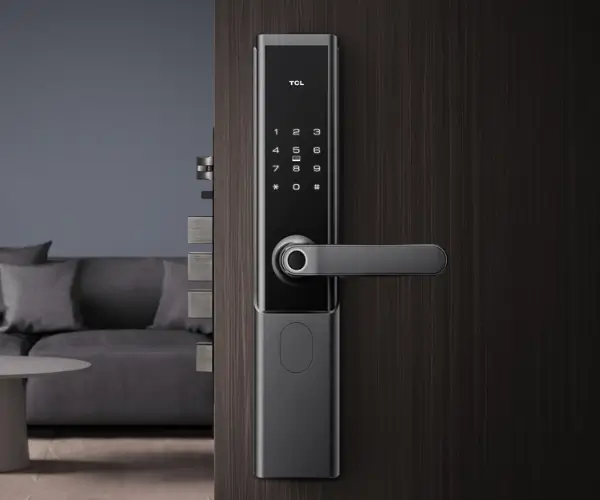Imagine a machine that seamlessly combines raw power with precision control, capable of adapting to a multitude of tasks—from turning a tiny robotic arm to powering industrial conveyor belts. That’s the magic of a DC motor with a gearbox. It’s a symbiotic partnership that enhances the fundamental capabilities of simple motors, transforming them into smart, adaptable, and robust mechanical drivers.

The Basics: What Is a DC Motor with Gearbox?
A DC motor with a gearbox, often called a gearmotor, is essentially a standard DC electric motor paired with a specialized gear reduction system. The primary purpose? To optimize torque and control speed. While a basic DC motor converts electrical energy into rotary motion, its raw output isn’t always suited for precise or heavy-duty applications. Adding a gearbox helps mold that raw energy into something more functional and manageable.
The gearbox, typically a set of gears housed within a compact casing, reduces the motor's high rotational speed while amplifying torque. This combination results in a versatile device capable of fine-tuning mechanical output—a cornerstone for automation, robotics, manufacturing, and even hobbyist projects.
Why Use a Gearbox? The Power of Torque and Speed Control
At the heart of most mechanical applications lies a balancing act between torque and speed. For example, moving a heavy load at high speed isn’t practical; you need substantial torque, but often, at a slower, controlled pace. Conversely, delicate tasks demand fine speed regulation with minimal torque.
Here’s where the DC motor with gearbox excels. It allows designers and engineers to tailor the output to their application's specific needs. The gearbox reduces the motor's high RPM—which can reach thousands of revolutions per minute—to a manageable, application-specific speed. Simultaneously, it increases torque proportionally.
Imagine a tiny, high-speed DC motor — transforming that power with a gearbox can produce enough rotational force to turn heavy machinery, lift loads, or precisely position objects. From robotic arms that need meticulous movements to conveyor belts handling bulky packages, this combination is a game-changer.
The Types of Gearboxes: Choosing Based on Application
Gearboxes come in different types, each suited to particular tasks:
Gear Reducers: The most common type for DC motors, they use spur, helical, bevel, or planetary gears to achieve reduction ratios. For example, a 1:100 ratio means the output shaft turns once for every 100 turns of the motor shaft, providing high torque but low speed.
Planetary Gearboxes: Known for their compact size and high efficiency, planetary gearboxes feature a central sun gear, planet gears, and an outer ring gear. This setup evenly distributes load and provides high torque density, making them ideal for robotics and automated machinery.
Spur Gearboxes: Simpler and less expensive, spur gearboxes provide straightforward reduction and are perfect for lighter loads or applications needing smooth, linear speed reduction.
Bevel Gearboxes: Used when the axis of rotation needs to change direction, such as in specific robotics or steering applications.
Choosing the right gearbox depends on factors including required torque, space constraints, efficiency, load type, and budget.
Key Advantages of Using a DC Motor with Gearbox
Integrating a gearbox with a DC motor creates a powerhouse of benefits:
Enhanced Torque Output: Gearboxes amplify torque, enabling the motor to handle heavier loads or initiate movement in applications that require significant force.
Precise Speed Control: Reducing rotational speed allows for fine control, crucial in robotics, CNC machinery, and medical devices.
Compact and Lightweight: Combining these components into a single unit reduces overall size and weight, which is a crucial consideration in mobile or space-constrained environments.
Energy Efficiency: Proper gear ratios mean less energy is wasted, and motors can operate at their most efficient points, extending lifespan and reducing operational costs.
Versatility: Available in various sizes, ratios, and configurations, gearmotors can be customized for virtually any application — from small hobbyist projects to large industrial setups.
Simplified Integration: In most cases, gearboxes are designed to be easily mounted onto motors, simplifying design procedures and manufacturing processes.
Real-World Applications That Depend on DC Motor + Gearbox
This potent combination finds its way into countless sectors:
Robotics: Precise arm movements, wheels, or actuators rely on gearmotors for accurate positioning and slow, controlled motions.
Automotive: Power windows, seat adjustments, and windshield wipers utilize DC gearmotors for smooth, controlled operation.
Industrial Automation: Conveyor systems, automated doors, and packaging machines benefit from the durability and control offered by gearmotors.
Consumer Electronics: Appliances, including printers and motorized curtains, employ small DC gearmotors for silent, reliable functioning.
Hobby and DIY: From remote-controlled cars to 3D printers, gearmotors empower enthusiasts to craft sophisticated projects with ease.
This concludes Part 1 of our exploration into DC motors with gearboxes. Next, we'll dive deeper into customization options, maintenance tips, emerging innovations, and how to select the perfect gearmotor for your specific needs. Stay tuned!
Leveraging innovations in modular drive technology, Kpower integrates high-performance motors, precision reducers, and multi-protocol control systems to provide efficient and customized smart drive system solutions.




































